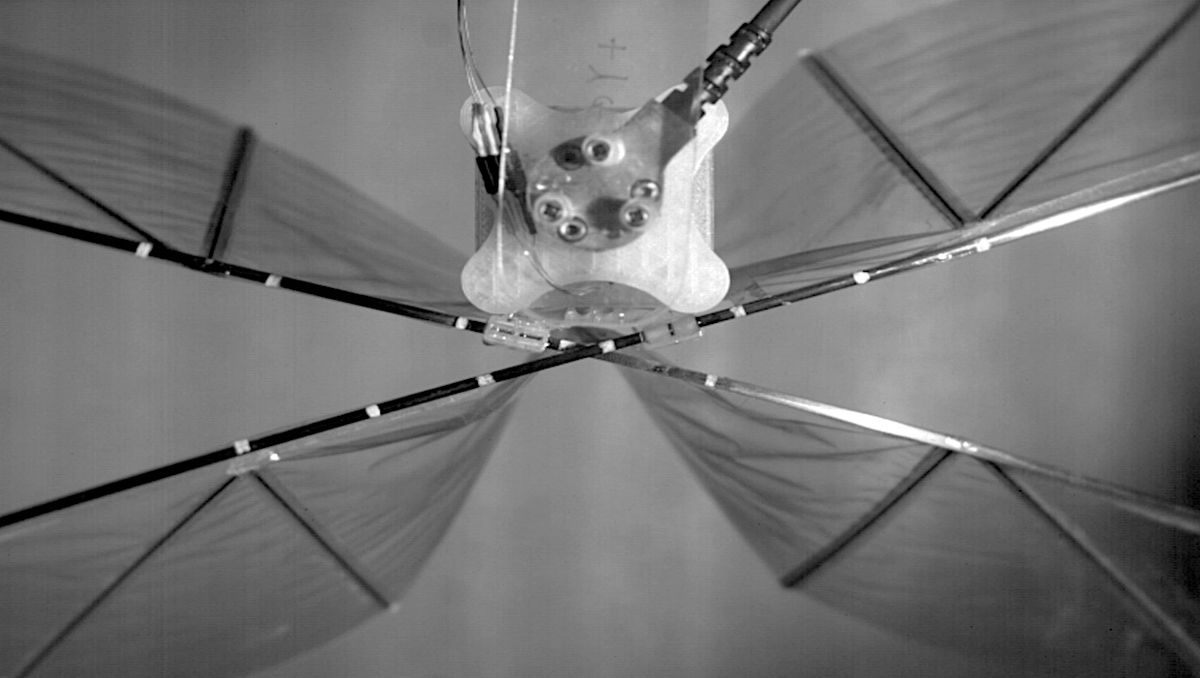The vast majority of drones are rotary-wing systems (like quadrotors), and for good reason: They’re cheap, they’re easy, they scale up and down well, and we’re getting quite good at controlling them, even in very challenging environments. For most applications, though, drones lose out to birds and their flapping wings in almost every way—flapping wings are very efficient, enable astonishing agility, and are much safer, able to make compliant contact with surfaces rather than shredding them like a rotor system does. But flapping wing have their challenges too: Making flapping-wing robots is so much more difficult than just duct taping spinning motors to a frame that, with a few exceptions, we haven’t seen nearly as much improvement as we have in more conventional drones.
In Science Robotics last week, a group of roboticists from Singapore, Australia, China, and Taiwan described a new design for a flapping-wing robot that offers enough thrust and control authority to make stable transitions between aggressive flight modes—like flipping and diving—while also being able to efficiently glide and gently land. While still more complex than a quadrotor in both hardware and software, this ornithopter’s advantages might make it worthwhile.
One reason that making a flapping-wing robot is difficult is because the wings have to move back and forth at high speed while electric motors spin around and around at high speed. This requires a relatively complex transmission system, which (if you don’t do it carefully), leads to weight penalties and a significant loss of efficiency. One particular challenge is that the reciprocating mass of the wings tends to cause the entire robot to flex back and forth, which alternately binds and disengages elements in the transmission system.
The researchers’ new ornithopter design mitigates the flexing problem using hinges and bearings in pairs. Elastic elements also help improve efficiency, and the ornithopter is in fact more efficient with its flapping wings than it would be with a rotary propeller-based propulsion system. Its thrust exceeds its 26-gram mass by 40 percent, which is where much of the aerobatic capability comes from. And one of the most surprising findings of this paper was that flapping-wing robots can actually be more efficient than propeller-based aircraft.
It’s not just thrust that’s a challenge for ornithopters: Control is much more complex as well. Like birds, ornithopters have tails, but unlike birds, they have to rely almost entirely on tail control authority, not having that bird-level of control over fine wing movements. To make an acrobatic level of control possible, the tail control surfaces on this ornithopter are huge—the tail plane area is 35 percent of the wing area. The wings can also provide some assistance in specific circumstances, as by combining tail control inputs with a deliberate stall of the things to allow the ornithopter to execute rapid flips.
With the ability to take off, hover, glide, land softly, maneuver acrobatically, fly quietly, and interact with its environment in a way that’s not (immediately) catastrophic, flapping-wing drones easily offer enough advantages to keep them interesting. Now that ornithopters been shown to be even more efficient than rotorcraft, the researchers plan to focus on autonomy with the goal of moving their robot toward real-world usefulness.
“Efficient flapping wing drone arrests high-speed flight using post-stall soaring,” by Yao-Wei Chin, Jia Ming Kok, Yong-Qiang Zhu, Woei-Leong Chan, Javaan S. Chahl, Boo Cheong Khoo, and Gih-Keong Lau from from Nanyang Technological University in Singapore, National University of Singapore, Defence Science and Technology Group in Canberra, Australia, Qingdao University of Technology in Shandong, China, University of South Australia in Mawson Lakes, and National Chiao Tung University in Hsinchu, Taiwan, was published in Science Robotics.
Evan Ackerman is a senior editor at IEEE Spectrum. Since 2007, he has written over 6,000 articles on robotics and technology. He has a degree in Martian geology and is excellent at playing bagpipes.



